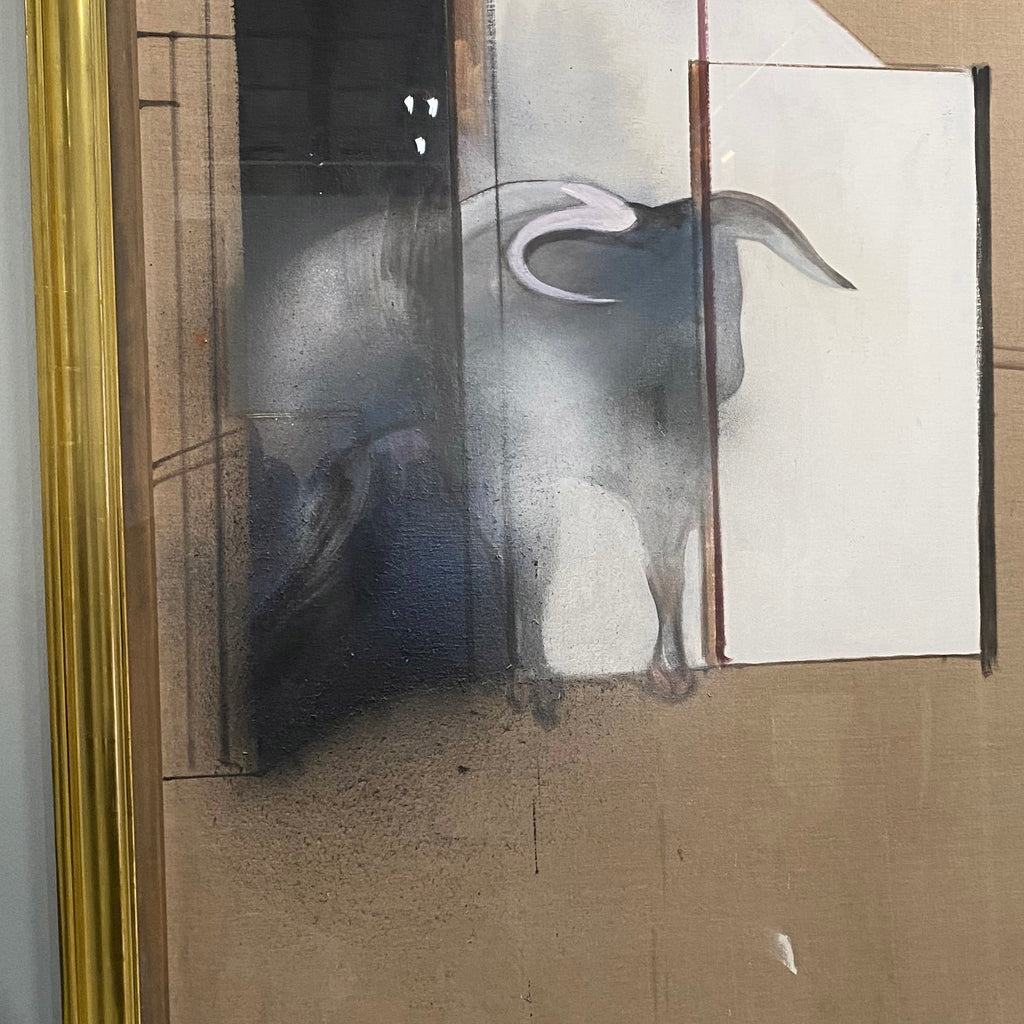'Bacon en toutes lettres' at Centre Pompidou, Paris
Share
I spent the day in Paris last week and saw the Francis Bacon exhibition at the Pompidou Centre. The show's based around the literature Bacon has cited as inspiration or starting points for some of his works. This is all pretty well known, and there are rooms where one can listen to readings from Aeschylus et al, all well and good. But the show functions rather better as a survey of late-period Bacon works, made up as it is of paintings from the mid-60s onwards, with a load of greatest hits from the 1970s and a lot of 1980s work, which is what I was most interested in. I'd only seen a handful of these late-late works before now, and I was curious to look up close at how Bacon's technique changed during this period.

This is Sand Dune from 1983. At some point in the early 1980s Bacon - that master of the accidental brushstroke - started using spray cans. And in reproduction these works look extremely duff - too smooth, too blended, just inert. But up close, in real life, it's possible to see how Bacon wasn't using the spray cans as a time-saver but as another source of imprecision and accident.

You can see here how Bacon uses the texture of the canvas (famously it was always the unprimed back of the canvas he painted on) with the edge spatter of the spray can to create more surface incident, not less.
An even better example comes in his Study of a Bull from 1991, not long before Bacon died:

And there's more in his cover-version of his Three Studies for Figures at the Base of a Crucifixion, originally from 1944, covered here in 1988:

Beyond this, the show was an opportunity to see several of Bacon's works where he'd used Letraset dry transfer lettering on the canvas:



And I'll end with this oddity, Street Scene (with Car in Distance), from 1984:

For more information check out the Centre Pompidou website. Oh, and did you know Bacon was also a jazz band leader? Neither did anyone else, but that didn't stop me putting together this fantastic concert poster.
